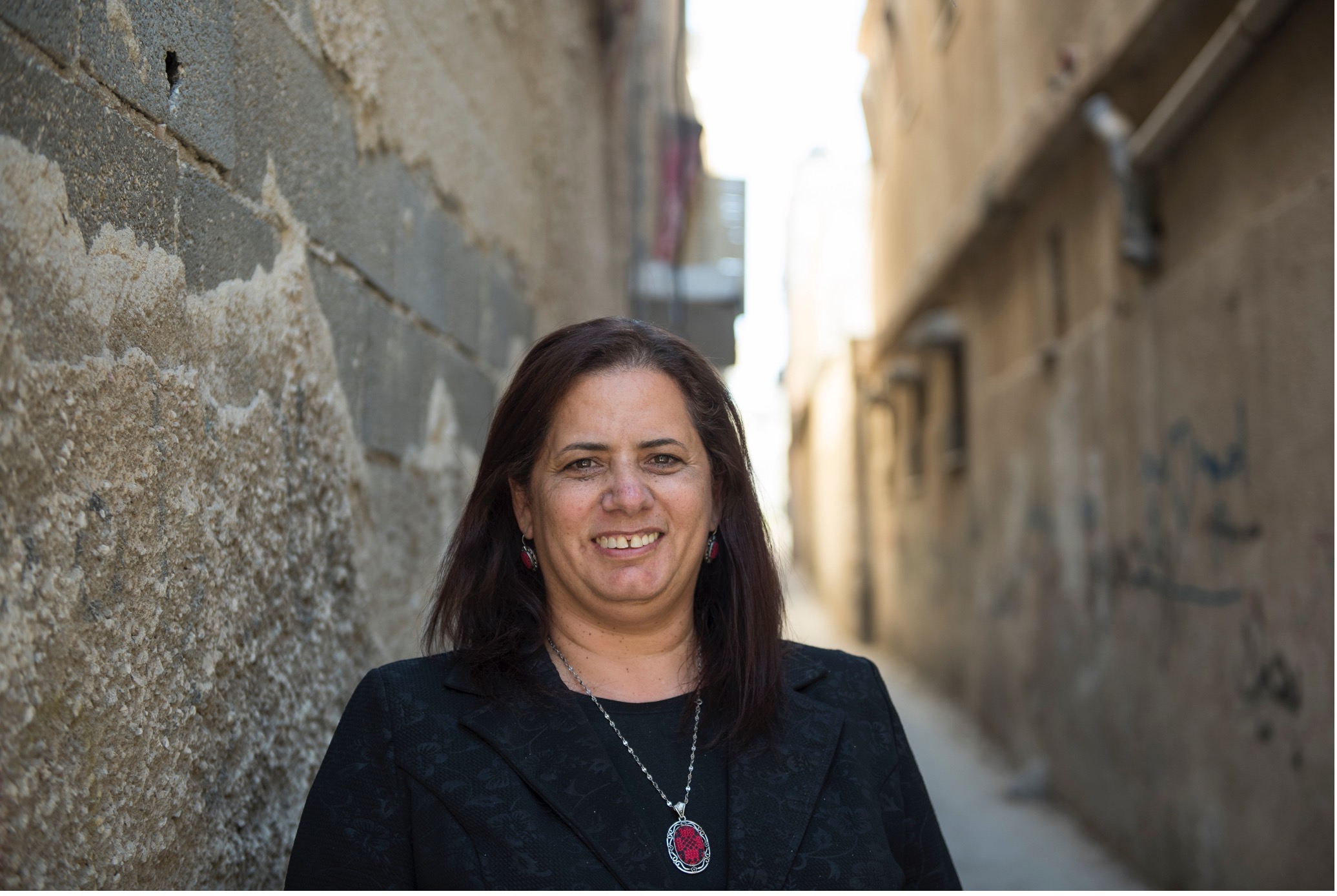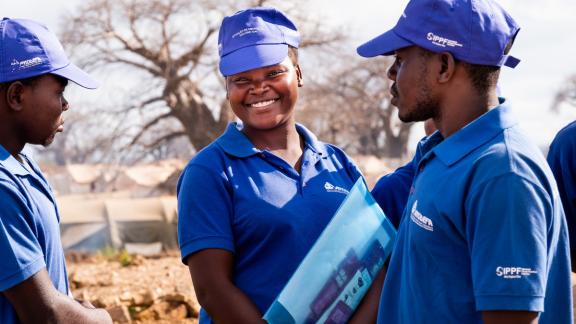
Ammal Awadallah, is a women's rights activist who has been working in the NGO sector for more than 2 decades. She began working with the Palestinian Family Planning and Protection Association (PFPPA) from mid-2006 and has been assigned as the Executive Director since 2019.
Articles by Ammal Awadallah

Yes. We do need a 'different' Gaza.
Featured perspective from Ammal Awadallah, Executive Director of IPPF Member Association, Palestinian Family Planning and Protection Association (PFPPA). The absence of airstrikes in Gaza is not the same thing as peace. A tense calm hangs in the air, broken by the devastating reality of families returning to what remains of their lives. The scale of the destruction is staggering: over 48,000 lives lost, more than 110,000 injured, and 69% of buildings destroyed. The health system is shattered, with 617 attacks on healthcare facilities. I will never forget the 8th of October 2023, the day our only sexual and reproductive health center in Gaza was bombed. Watching the videos of my team returning to their former workplace in Northern Gaza, only to find their desks and equipment buried under rubble and dust, was devastating. It's a stark reminder of the immense rebuilding efforts needed. And now, we face further proposals of forced 'relocation' and takeover. The international community faces a defining moment. For years, I have watched the cycles of violence and destruction. Now, women and girls in Gaza should finally be able to access services without the fear of being bombed on their journey. But can the global response truly match the scale of their suffering? Throughout the past 15 terrifying months of bombings, I’ve led our teams working in Gaza. Despite huge challenges, our 42 frontline providers have delivered over 235,000 essential sexual and reproductive health services to 59,000 people. Even with the current ceasefire, which remains tenuous at best, access remains severely restricted. Israel’s control over the flow of goods continues to hinder recovery efforts, preventing essential supplies and commodities from reaching those who need them. My teams in both Gaza and the West Bank face constant pressures - navigating checkpoints, enduring delays, and carrying the emotional weight of working under difficult conditions. These barriers are not simply logistical; they are inherently political. Many health facilities are buried under rubble, some with the remains of loved ones still inside. Imagine trying to access care in that environment. For women seeking contraception, post-rape support or maternal care, the psychological toll is unimaginable. The loss of healthcare workers is just as devastating and deeply personal for the Palestinian Family Planning and Protection Association (PFPPA). Earlier this year, our own team member, Dr Thabat Salim, was killed in an Israeli airstrike. Our team in Gaza are not exempt from the immense suffering faced by everyone else. They too have lost loved ones, homes and any sense of security. Many are living in tents or shelters, struggling to access water, menstrual products, food and medicine. And yet, despite their own unimaginable losses, they continue to find the strength to get up every day and provide care. How they manage to do so in these conditions is beyond comprehension. But with every life lost and every new hardship endured, the suffering deepens, leaving wounds and trauma that will last for generations, long after the bombs stopped falling. While foreign military budgets grow, humanitarian aid is dwindling. The challenge feels overwhelming. With the U.S. freezing nearly all foreign assistance worldwide (with the exception of Egypt and Israel) we’re relying more than ever on other countries to step up. These cuts are particularly troubling given the U.S. government’s complicity in the bombings over the past 15 months, including their military support and proposal for displacement. Aid is incredibly important, but it must not be charity. It must be a pathway to justice. In Gaza’s context, that means reparations and accountability, especially given the very real possibility of future genocide trials. Accepting aid as an individual is a necessary, but hard, reality. It can highlight the lack of autonomy and the ongoing occupation. So aid must do more than address immediate needs. It must help restore dignity, honour agency, and pave the way for long-term recovery. Crucially, we must also listen closely to our communities. Are we providing the most affected Palestinians the services they truly need? PFPPA has a proven track record of delivering localised, vital SRH services even under the most challenging circumstances. With additional funding, we can do so much more. Rebuilding our center and expanding services is just the start to ensuring that women and girls, including survivors of sexual and gender-based violence, have access to the comprehensive care they need. Gaza is now facing a new crisis as it struggles to recover. Netanyahu has repeatedly publicly embraced the Trump administration’s proposal to take over the Gaza Strip and displace Palestinian residents, saying that we need to build a ‘different Gaza’. I agree, we do need a ‘different Gaza’. But not one imposed through displacement and control. We need a Gaza defined by Palestinian voices, where they can live in peace and freedom, and enjoy autonomy and opportunity. Gaza belongs to the Palestinian people. The world is watching but it’s time to act. To act boldly, equitably, and justly. Palestinians deserve nothing less.

How to improve sexual and reproductive health care in conflict zones
This year has thrown crisis after crisis at a world already struggling with the impacts of the COVID-19 pandemic. From the escalation of violence in Gaza to the ongoing civil war in Tigray, and the rapid fall of Afghanistan just a few weeks ago, this turbulent year has seen subsequent crises in a world already struggling with the impacts of the pandemic. Conflicts, war, and situations of political instability exacerbate existing inequalities — with women, girls and marginalized groups suffering disproportionately — not only due to the conflict itself, but from a lack of access to basic sanitation and health care facilities, as well as the increased risk of sexual violence, gender-based violence, early marriage, and human trafficking. With an increasing number of people living in conflict-affected areas — nearly 100 million people — combined with the ongoing COVID-19 pandemic, 2021 has continued to highlight the importance of well-maintained health infrastructure and trained health care workers, including access to high-quality sexual and reproductive health care. When attacks escalated in the protracted conflict zone of Gaza earlier this year, an estimated four women per household needed reproductive health care, and an estimated 87,000 women in the Gaza Strip and nearby areas were pregnant. The International Planned Parenthood Federation’s humanitarian response outreach involved visiting families to offer contraceptive advice and services, as well as maternity care. Such responses are critical to improving sexual and reproductive health care in conflict zones. To include sexual and reproductive health care in their responses, here are five approaches governments, along with development and humanitarian experts should take: 1. Put women and girls first by prioritizing sexual and reproductive health care Too often, sexual and reproductive health care is an afterthought in conflict situations, with other basic necessities and essential services taking precedence. But women and girls are disproportionately affected by reproductive health issues in conflict zones, with three in five preventable maternal deaths occurring in conflict, displacement, and natural disasters and one in five women likely to be pregnant during a crisis. Women and girls are also more often left behind in ensuing evacuation efforts due to the burden of caring responsibilities, patriarchal and cultural beliefs, and the fact they are often already the most vulnerable in affected communities. Without access to sexual and reproductive health care, women and girls are likely to suffer severe consequences from lack of care, including high rates of sexually transmitted infections, unintended pregnancy, unsafe abortion, miscarriage, premature labour, unassisted deliveries, and even death. By prioritizing sexual and reproductive health care in international and local responses to conflict, providing adequate and dedicated aid funding, and plugging critical gaps in care with gender-sensitive solutions, governments can ensure women and girls focus on their health first 2. Provide integrated health care Not only do unplanned pregnancy rates increase exponentially in humanitarian settings, but a staggering 70% of women are likely to experience gender-based violence, alongside increased transmission rates of STIs, increases in unsafe abortions, and heightened mental health issues. Contraceptive care in conflict zones is often an entry point for women, girls, and their families into health care systems. In Gaza, support by the Palestinian Family Planning and Protection Association isn't just about providing contraception but also comprehensive care packages including primary health care, sexual health care, mental health help, COVID-19 care, access to legal counsellors, and extended support for women's families. For children, who account for nearly 50% of the population in Gaza, youth volunteers from the PFPPA provided much-needed entertainment and psychological support while family members received care. By providing a package of integrated care solutions in disrupted health systems, rather than focusing on individual services, response teams are likely to see better outcomes. 3. Include comprehensive sexuality education The right to education takes a significant hit in times of crisis, and adolescent girls in conflict zones are 90% more likely to be out of school. Not going to school increases the possibility that girls will become vulnerable to various types of violence, such as child marriage, and increases the risk of unplanned pregnancies among teenagers and young women. But a good education isn't just about going to school, and the inclusion of comprehensive sexuality education, which teaches young women and their communities about consent, contraception, and unintended pregnancy, is just as important as schoolbooks. CSE is also shown to lower the chance of child marriage and increase contraception uptake, allowing girls to focus on themselves first. Providing CSE in long-term humanitarian response plans to protracted crises, such as conflicts, offers a sustainable solution to misinformation and taboos around sexuality amongst the community. 4. Build a community around access to sexual and reproductive health care IPPF is locally owned and globally-connected, and having local people work with the community makes a huge difference when providing sexual and reproductive health care in conflict zones. While using contraception is an individual choice, engaging community leaders and trusted local staff members helps build strong relationships between providers and communities, as well as within communities themselves, and helps to engage those on the fringes of already marginalized groups. Locally-owned services also retain the agency of communities, ensuring that the people providing care are the people who know the community best — a fundamental need in chaotic situations like conflict. 5. Remember that each conflict zone is different While it's tempting to take a one size fits all approach to humanitarian responses, technical experts must remember that with each conflict comes different challenges, different burdens, and different solutions. And just like those living in non-conflict situations, every woman and girl's stories and needs are different. Conflict zones require tailored, specific, and dignified humanitarian responses created through an intersectional lens and co-designed with local partners. Conflict-related humanitarian responses are a unique opportunity to provide long-term solutions for women and girls’ sexual and reproductive health.









